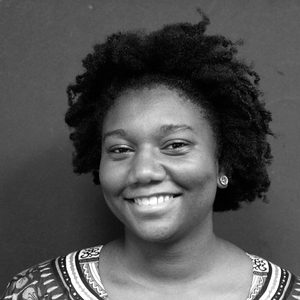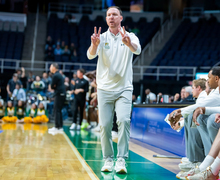Crockett: Public schools should include gender education to combat bullying
In light of National Bullying Prevention Month, October is a time to focus on inclusive efforts for all students to feel protected by their school systems.
In order for schools to make the most of anti-bullying awareness, education in gender identity and sexual orientation needs to be a priority, specifically in public school classrooms.
According to research published in the New England Journal of Medicine, 91 percent of LGBTQ students are more likely to be bullied than their heterosexual peers.
With an increased knowledge and consciousness of gender fluidity and expression, teachers and administrators should implement gender and sexual orientation education in their curriculums. In taking these specific, preventative measures against bullying, a transformative approach can be made to address the ways in which people think of gender. This could ultimately lead to acceptance on a national basis.
In a Huffington Post article published last week, sociologists Jessica Ringrose and Victoria Rawlings suggested that bullying occurs between a perceived “weak” and “strong” individual. The “weaker” person has attributes that the bully oppresses, which are often associated with a student’s identity, sexual orientation or gender expression.
Both sociologists emphasized that childhood bullying mirrors social inequalities that exist in the adult world. Because aspects of identity outside of heteronormativity are often used to bully victims as children, tackling bullying at its origin prevents it from becoming an institutionalized form of discrimination.
For these reasons, teachers should push for education programs that dispel assumptions about gender, and work to incorporate these concepts and protections into school policies.
As of Oct. 12, only one out of 115 public school districts in Idaho had adopted new measures on gender expression protections for LGBTQ students, according to the Associated Press. However, this vast disparity demonstrates that there are gaps that need to be addressed when it comes to implementing comprehensive diversity action in public schools.
More schools need to get behind these programs and acknowledge that not having these accommodations puts certain students at risk. When these ideas are taught in the classroom, kids will internalize that bullying someone on the basis of their gender identity and sexual orientation is wrong.
Anti-bullying efforts on behalf of public schools must also be mindful of people who do not identify with a gender in the traditional binary. Often, in the fight against LGBTQ discrimination, non-gender binary people can be forgotten. This is because their experiences with bullying may not be taken as seriously as it doesn’t necessarily deal with their sexuality, but more so with how they present themselves to the world.
Derogatory terms that allude to a person’s sexual identity, or even just basic insensitive vernacular — such as “that’s so gay” in reference to something perceived as weak, feminine or inadequate — need to be explained to students in an academic setting why it should not be used.
Consequently, school systems need to understand there is no stereotypical situation of bullying. Girls can bully boys and smaller kids can bully bigger ones, it really depends on the different factors that allow for students to identify differences among each other.
Elaina Crockett is a senior television, radio and film major and African American studies minor. Her column appears weekly. She can be reached at ekcrocke@syr.edu.
Published on October 19, 2015 at 12:03 am






